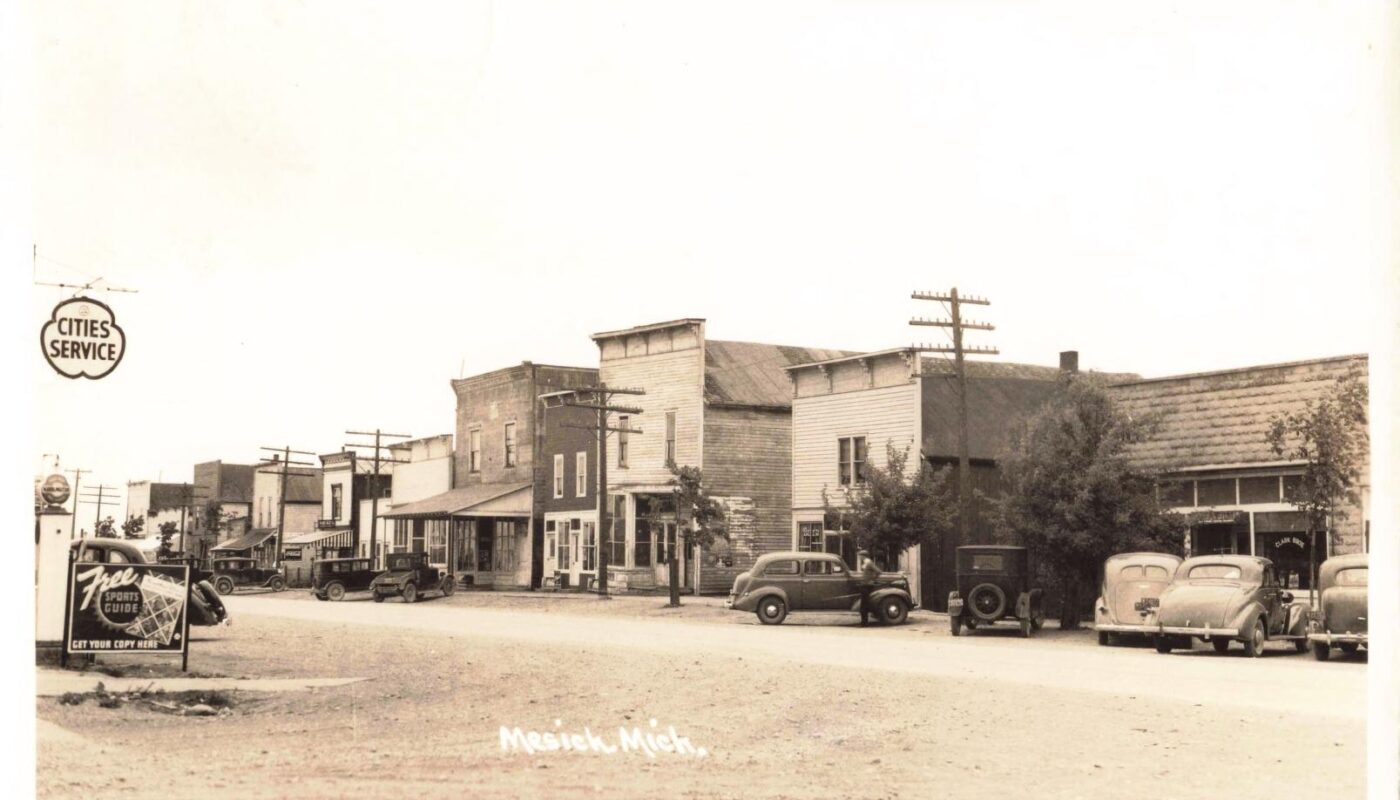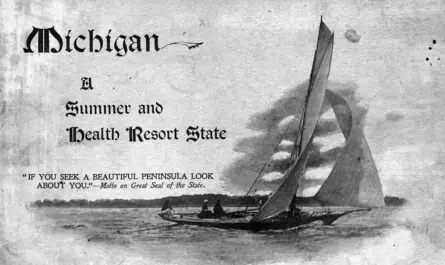Tucked into the hills of Wexford County, the history of Mesick Michigan, began with a bend in the railroad and a big idea. From its lumber mill roots to its annual Mushroom Festival, Mesick’s story is one of hard work and hometown pride. Today, its history still lingers along Main Street, where the echoes of saws, trains, and parades tell how this small town made its mark on Michigan’s map.
Table of Contents
Video – History of Mesick Michigan 1890-1940
From roaring sawmills to potato-laden sleds — Mesick, Michigan’s story is full of grit and growth. Watch this 3-minute journey through time and learn how this village found its place in northern Michigan Moments history.
Founding of Mesick (1880s–1890)
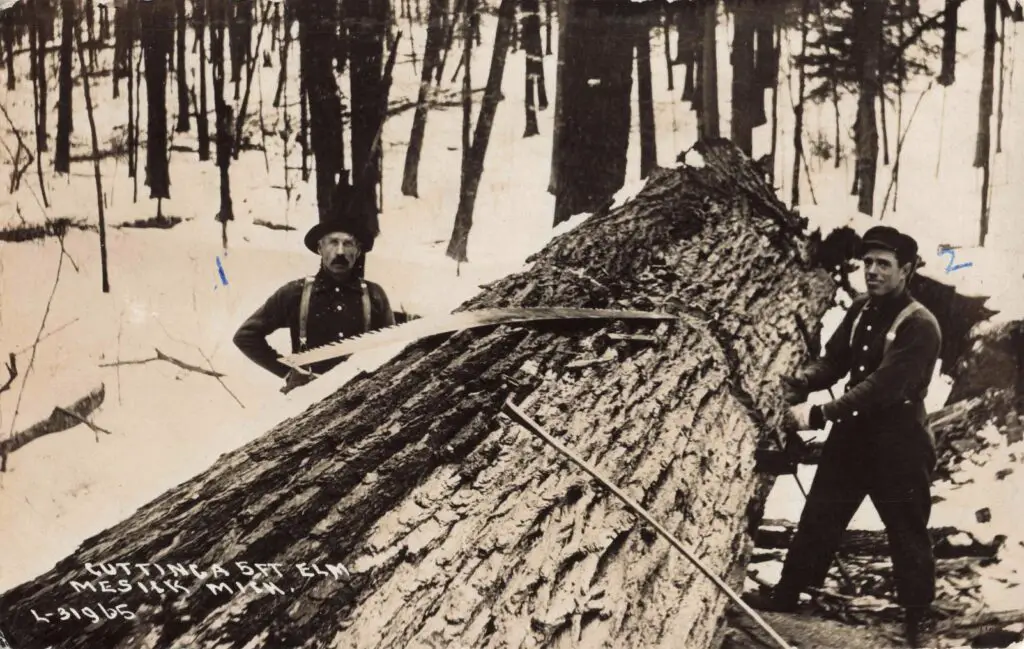
Mesick’s story begins with the expansion of the Ann Arbor Railroad through the deep hardwood forests of northwestern Michigan. In the late 1880s, Howard Mesick, a Civil War veteran who homesteaded 160 acres overlooking the Manistee River, recognized the opportunity that rail transport could bring.
In 1889, he partnered with surveyor George L. Wells of the Ann Arbor Railroad to plat a new village. Wells helped lay out the town in exchange for a few lots—an investment that paid off. The railroad’s engineers had designed a sharp “hairpin turn” near the Mesick property to find the best crossing of the Manistee River. That turn bypassed the older settlement of Sherman, unintentionally granting Mesick a prime spot on the rail route.
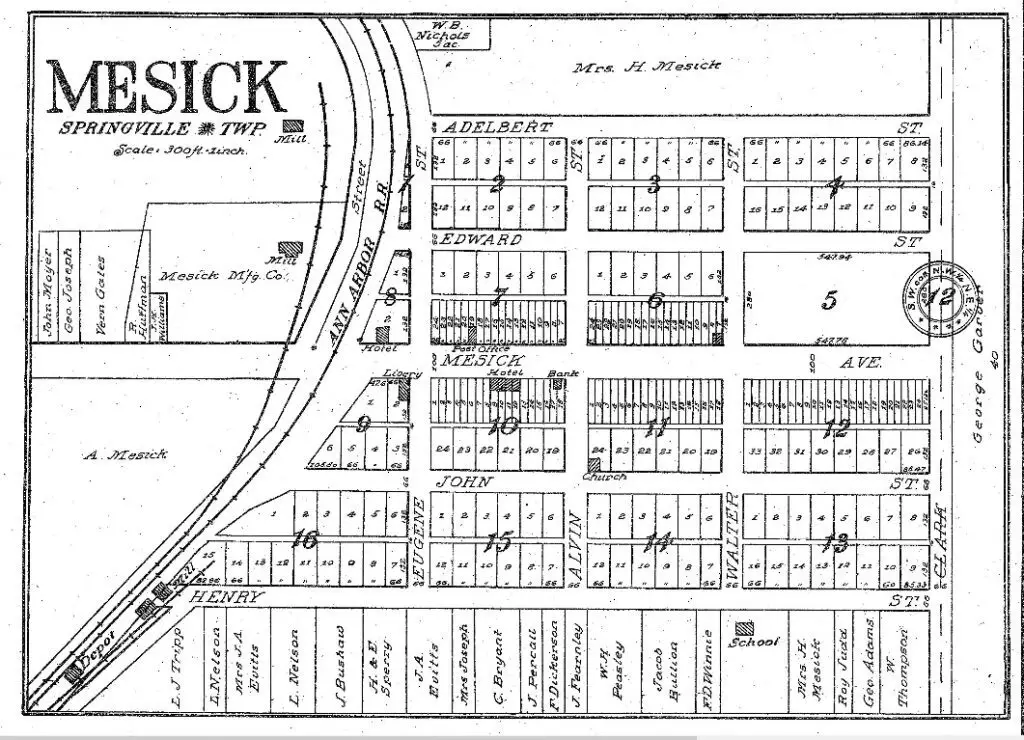
The village plat was officially accepted by the State of Michigan on February 25, 1890, marking the formal birth of Mesick. That same year, the first post office opened its doors.
Local newspaperman F. E. Rice later described early Mesick as “two or three stores, a schoolhouse, and one church… old board sidewalks lined part of the main street, and the side streets were just cow paths.” Yet, the combination of rail access and entrepreneurial drive ensured Mesick’s survival and eventual prosperity.
Timber and Sawmills: Building an Economy from the Woods
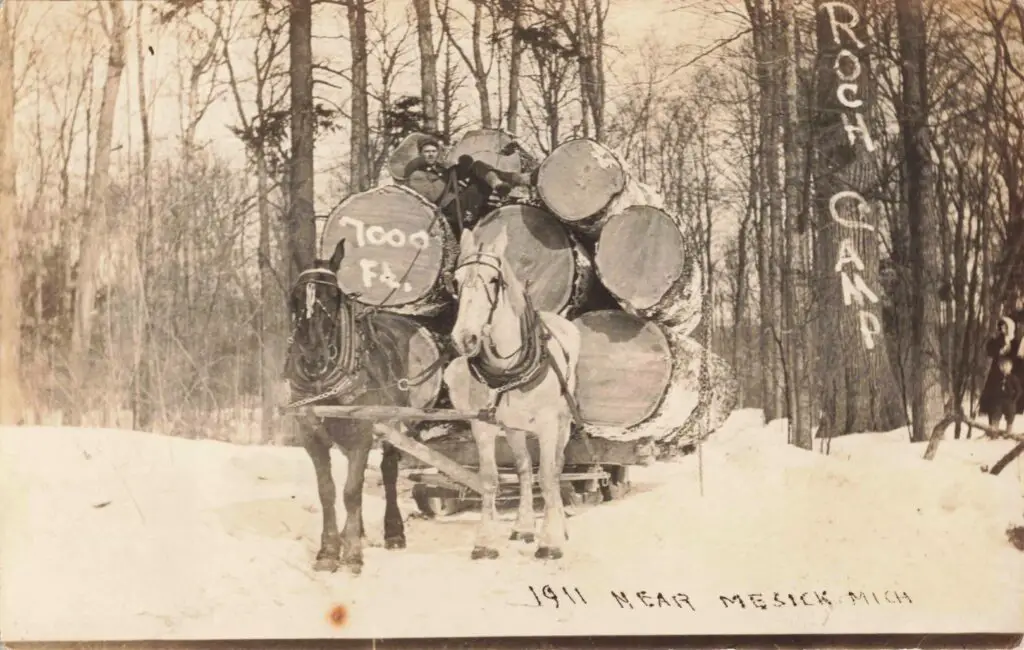
In the 1890s, the forests surrounding Mesick defined its early economy. The town stood in the heart of Wexford County’s lumber belt, and the demand for Michigan white pine seemed endless.
Howard Mesick built the village’s first sawmill during the winter of 1890–91, founding the Mesick Manufacturing Company along the new railroad tracks. Timber teams dragged enormous logs through the snow to the mill, and the rail line shipped cut lumber south.
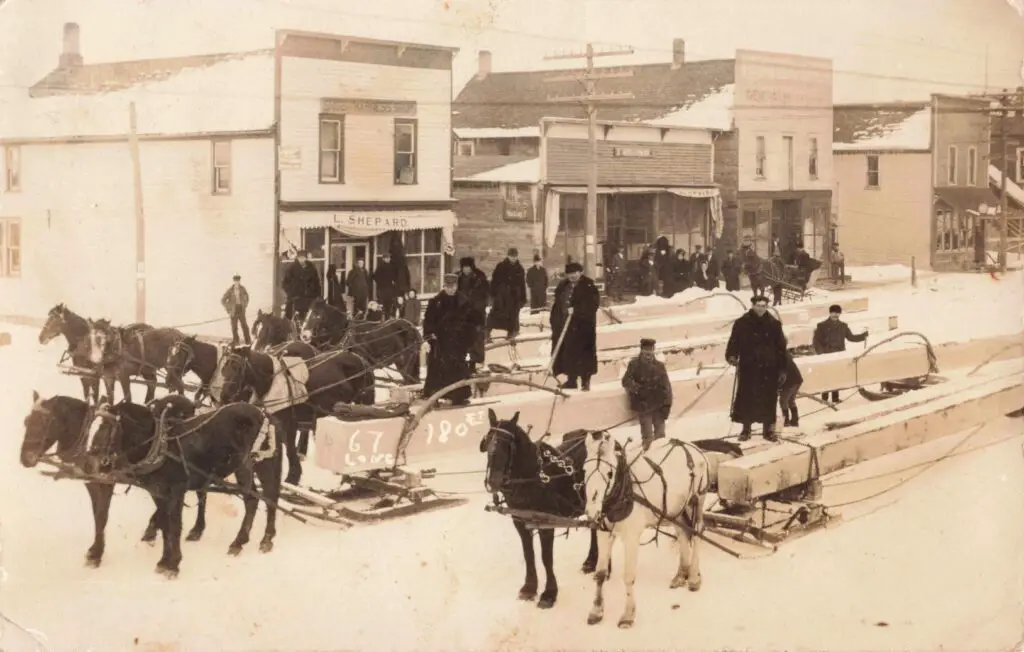
Historic photos show horse-drawn sleds piled high with timber, and the men who worked those woods—faces toughened by wind and sawdust—posed proudly beside their work. By 1900, Mesick’s population had passed 300. The village officially incorporated in 1901–02, with its sawmills, blacksmith shops, and rail depot forming the backbone of its economy.
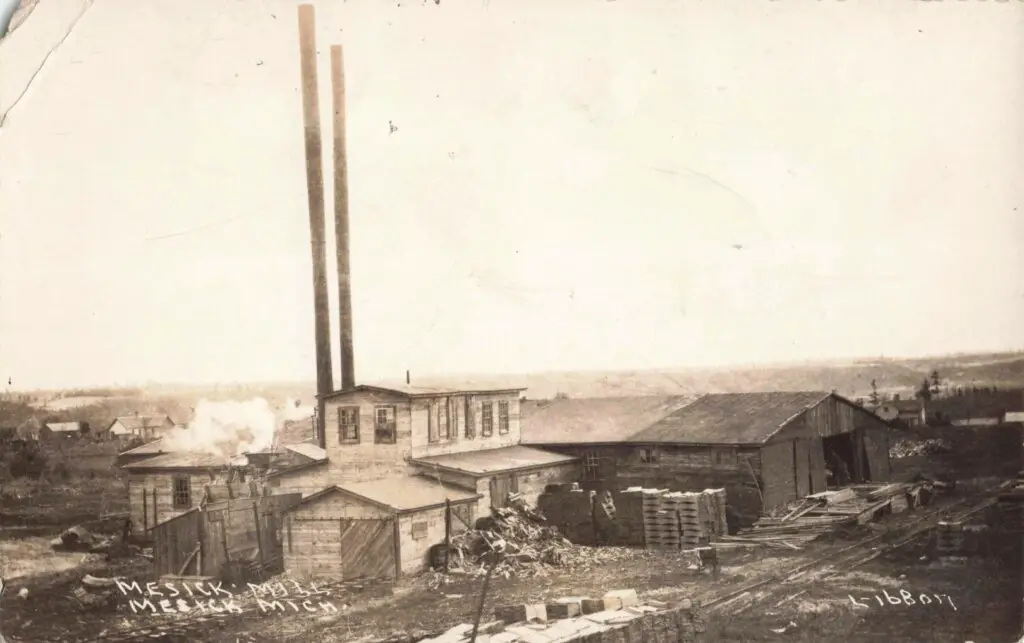
When the big lumber outfits like Cummer & Diggins moved on around 1930, many loggers stayed behind. They cleared the stumps and began farming the open ground, marking Mesick’s transition from a lumber camp to an agricultural village.
Farms, Potatoes, and the Lifeline of the Railroad
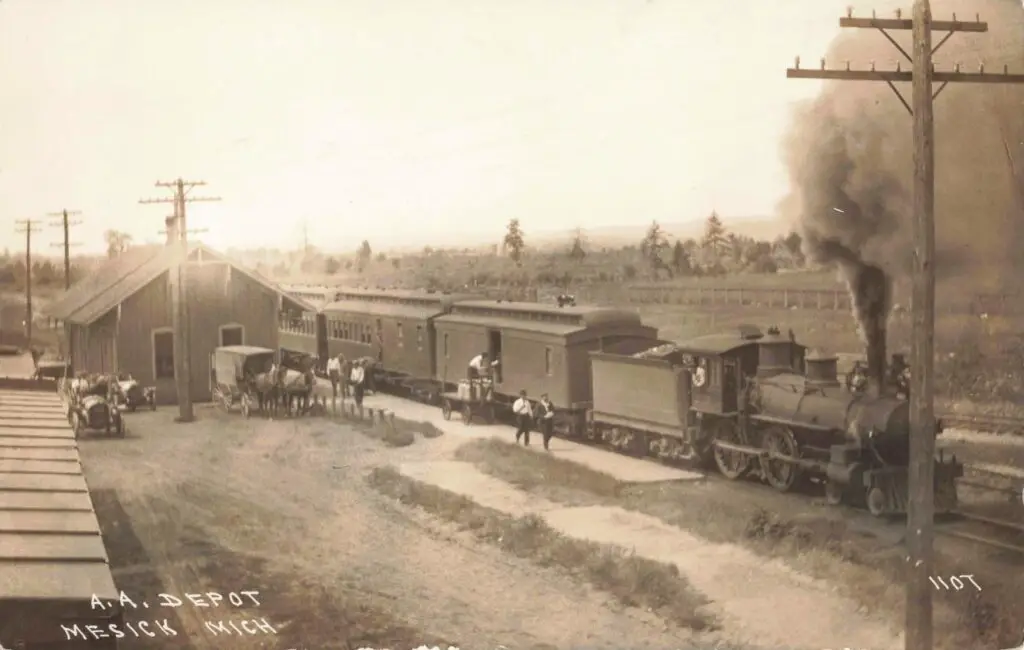
As the timber era waned, agriculture took root. Farmers found that the newly cleared land produced good crops—especially potatoes. Horse-drawn wagons hauled sacks of potatoes to rail sidings and warehouses for shipment across Michigan.
But potatoes were demanding. Over-farming quickly drained nutrients from the sandy soil, forcing many families to rotate in beans, corn, and hay or raise dairy cows. Still, potatoes remained Mesick’s calling card for decades.
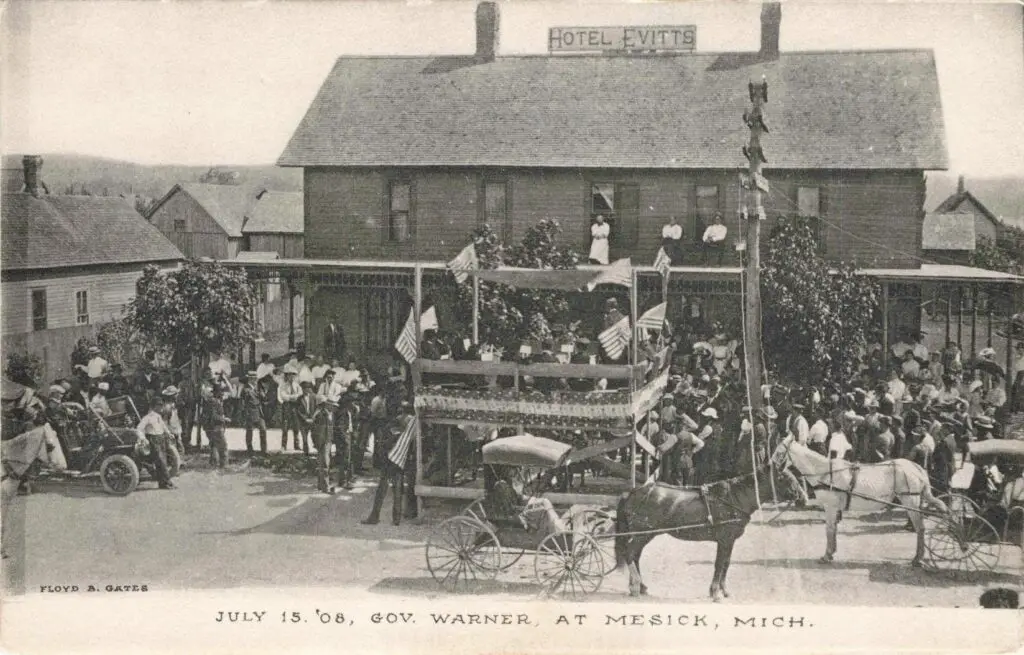
The Ann Arbor Railroad depot, located just southwest of town, served as the lifeline for commerce and communication. It shipped lumber in the early years and farm products later on. Passenger service brought goods, visitors, and even celebrities: on July 18, 1908, Governor Fred Warner arrived by train to a hero’s welcome on Main Street.
By 1902, Mesick boasted four churches, a small library, and a growing sense of permanence. The railroad had made it more than a dot on the map—it made it a community.
Building a Village: Modern Conveniences Arrive
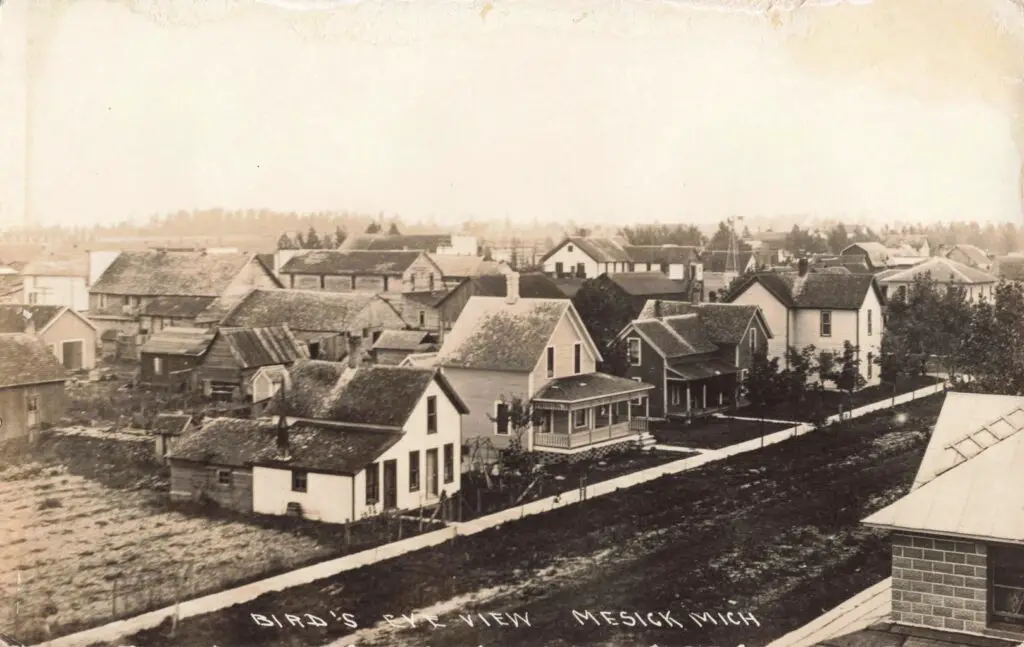
Following incorporation in 1901, Mesick began building its civic framework. R. M. Harry served as the first village president, with F. E. Rice as clerk and W. W. Galloway as treasurer. A tiny wooden village jail was erected in 1902, and soon after, modern conveniences began to arrive.
In 1904, Mesick approved the Citizens Telephone Company franchise, bringing telephone lines to homes and businesses. By 1909, residents petitioned for gasoline street lamps, brightening Main Street for the first time.
A smallpox outbreak in 1912 tested the town’s resolve, but by 1914 Mesick had a public water system for homes and fire protection.
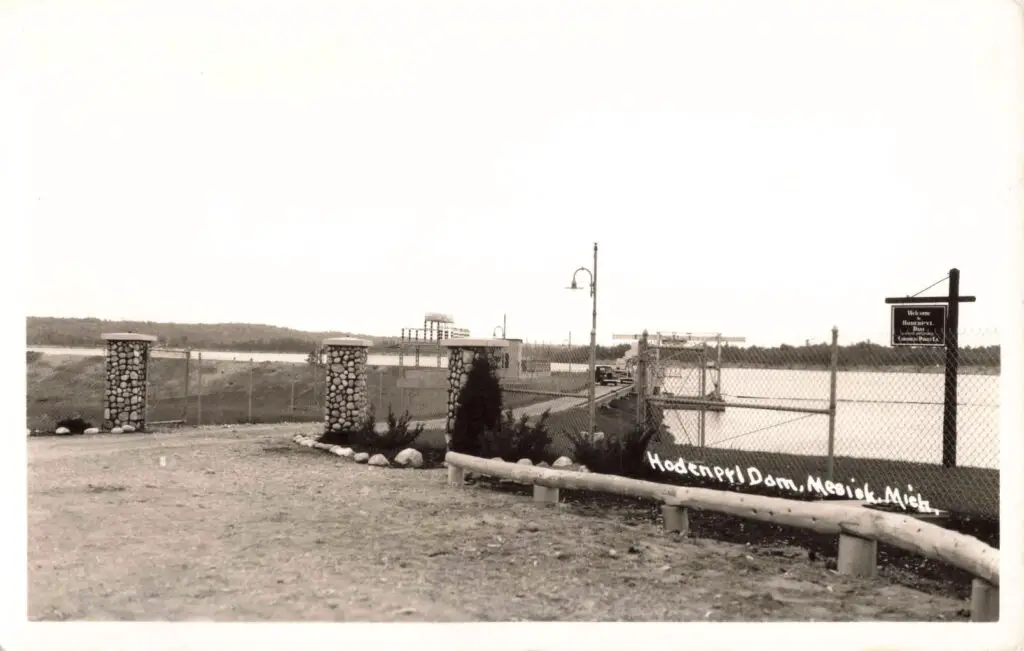
The 1920s brought electricity from the new Hodenpyl Dam, completed by Consumers Power on the Manistee River. Radios, lights, and electric tools transformed daily life.
During the Great Depression, Mesick’s farmers relied on ingenuity. A community cannery, built in 1943, allowed families to preserve food and share resources. The village’s streets were plowed in the 1930s and paved in 1945, marking its shift from horse-drawn travel to the automobile age.
By 1950, Mesick had a waterworks system, modern utilities, and plans for a fire station—remarkable progress for a once-frontier settlement.
Main Street Businesses and Local Leaders
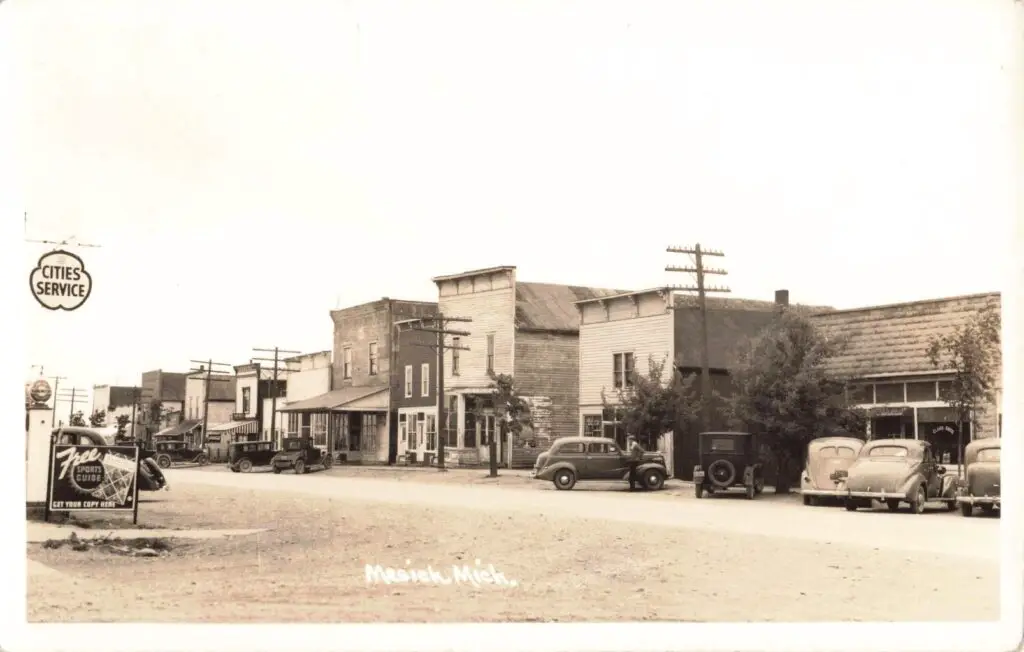
The story of Mesick’s progress is inseparable from the people who built it.
Howard Mesick opened the first general store around 1890, later sold to W. W. Galloway. By the 1910s, C. R. Bell’s General Merchandise and George & Hannah Joseph’s Store had become fixtures downtown.
Freeman E. Rice, the town’s newspaper editor, founded The Mesick Sun in 1901 and helped run a public library from his print shop.
The Farmers’ and Merchants’ Bank, Evitts Hotel, and small eateries like Updike’s Restaurant gave Mesick the feel of a bustling frontier town. By the 1920s, Frank and Don McClish had opened a Ford dealership, a sign that automobiles were replacing horses and wagons.
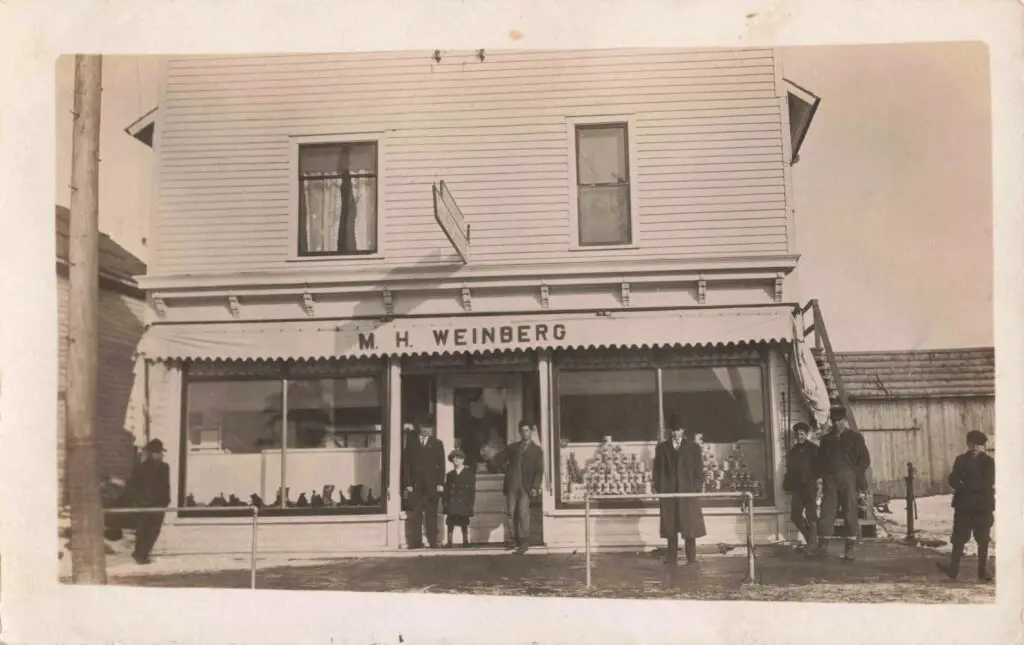
In later decades, local entrepreneur M. H. Weinberg became known for buying and shipping produce, particularly potatoes, helping Mesick farmers reach statewide markets.
The Mesick family remained central. Howard’s brother Walter Mesick was the village’s first blacksmith, and Howard’s wife Eleanor was active in the Seventh-day Adventist Church, which had been physically moved from Sherman to Mesick in 1897.
Together, these individuals gave the town its backbone—entrepreneurs, craftsmen, and civic leaders who turned forest clearing into a thriving community.
The Mushroom Capital of Michigan

In the years after World War II, Mesick found a new identity rooted in its woods once again. The forests surrounding town were rich with morel mushrooms, a spring delicacy prized by foragers. In 1959, locals launched the Mesick Mushroom Festival to celebrate the annual harvest and draw visitors to the region.
The festival grew rapidly, earning Mesick the official nickname “The Mushroom Capital of Michigan.” Each May, the town fills with mushroom hunters, carnival rides, and small-town parades—a modern echo of the community spirit that built Mesick a century earlier.
From Forest to Field to Festival
Between 1890 and 1950, Mesick transformed from a rugged logging camp into a modern farming village—and eventually into a destination for mushroom hunters and outdoor enthusiasts.
Its history is a story of adaptation and persistence, shaped by railroads, sawmills, farms, and the people who refused to let their village fade. From the first lumber sleds to the Mushroom Festival crowds, Mesick’s journey captures the enduring rhythm of rural Michigan life.
History of Mesick Michigan FAQs
Learn Mesick Michigan facts from this FAQ exchange.
Why is Mesick called the “Mushroom Capital” of Michigan?
Mesick earned the title because of its abundant growth of morel mushrooms in the spring and the success of the Mesick Mushroom Festival, first held around 1959, which celebrates foraging, cooking, and community culture.
When did Mesick officially start, and what role did the railroad play?
Mesick was platted in 1889 and formally accepted as a village in 1890. The arrival and routing of the Ann Arbor Railroad (which made a sharp turn near Mesick) was critical: it bypassed the older settlement of Sherman and gave Mesick strategic advantage as a rail stop and shipment hub.
What major industries supported Mesick from 1890 to 1950?
Mesick’s early economy was driven by logging and sawmills, using nearby timber and shipping lumber by rail. After the forests were logged out, the community shifted to agriculture—especially potato farming, dairy, and mixed crops. Over time, the infrastructure (telephone, water, electricity, paved roads) supported a stable rural village through the mid-20th century.
Sources For the History of Mesick Michigan
- Mesick Historical Museum – Mesick History Project
- Wexford County Historical Society Archives
- The Mesick Sun, 1901–1915
- Cadillac Evening News – Special Local Editions
- Michigan Historical Center – Governor Fred Warner Biography
- Consumers Energy Archives – Hodenpyl Dam Project
- Mesick Centennial Program (Wexford County Historical Society)
